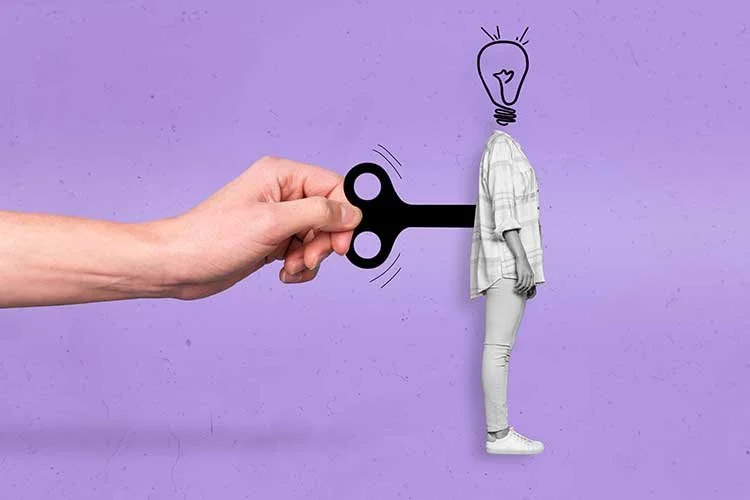Is Weed A Stimulant | Is Marijuana A Stimulant
Hi everyone!!
Welcome to our exploration of a hot topic in the world of health and wellness – the categorization of Cannabis, often referred to as weed. Is it a stimulant, or does it fall under a different classification? As the debate around the use of Cannabis continues to evolve, it's crucial to educate ourselves about its effects on the body and mind. So, let's delve into the science and studies behind this intriguing question – is weed a stimulant?
Strap in, and let's unravel this together!
What is weed and why is it becoming so popular?
Weed, also known as marijuana, is derived from the Cannabis plant and is widely recognized for its psychoactive properties. The active ingredient, Tetrahydrocannabinol (THC), is responsible for inducing the sensation of being 'high'. Its popularity primarily owes to its recreational and therapeutic use.
While some enjoy weed for its mind-altering effects, others employ it as a pain reliever or a means to mitigate symptoms of conditions such as epilepsy or glaucoma. Despite its controversial status in many jurisdictions, the global trend toward decriminalization and legalization has contributed to an increase in its popularity over recent years.
B. Mention of the ongoing debate about whether weed is a stimulant
Understanding Stimulants
What are stimulants and how do they affect the body and mind?
Stimulants, often referred to as 'uppers', are a type of substance that increases the activity in the central nervous system and the body. This category of drugs can speed up the messages between the brain and the body, giving rise to a range of effects such as increased energy, alertness, and attention. Stimulants can also elevate heart rate, blood pressure, and respiration.
Some Common Stimulants
Common examples of stimulants include caffeine, nicotine, amphetamines, and cocaine, each with varying levels of intensity and duration of effect. However, it's important to note that while they may offer short-term benefits such as enhanced focus or energy, prolonged use can lead to adverse effects, including dependence, heart issues, foggy brain function, and mental health problems such as anxiety or paranoia.
Note: Understanding the nature of stimulants is essential in our exploration of whether weed falls into this category.
The Effects of Weed
Weed, primarily due to its active ingredient THC, exerts a range of effects on the body and mind. Upon consumption, individuals may experience relaxation, enhanced sensory perception, laughter, and altered concept of time. Physically, weed can induce changes in heart rate, cause bloodshot eyes, and increase appetite.
Cognitively, it can impair short-term memory, motor coordination, and concentration, and in some instances, trigger anxiety and paranoia. The effects can vary widely among individuals due to factors such as dosage, mode of consumption, and the person's tolerance level. It's also worth noting that weed may have potential therapeutic effects in managing conditions like chronic pain, nausea, and certain mental disorders, although research in these areas is ongoing. It's this complex interplay of effects that contributes to the debate on whether weed is a stimulant, depressant, or hallucinogen.
How weed affects neurotransmitters and brain function
Weed's primary impact on the brain revolves around its interaction with the body's endocannabinoid system (ECS). The ECS is a complex cell-signaling system that plays a key role in regulating a range of functions and processes, including sleep, mood, appetite, memory, and reproduction. We are only beginning to understand this complex system and the role of cannabinoids like THC in modulating it.
The active compounds in weed, especially Tetrahydrocannabinol (THC), mimic the body's natural endocannabinoids, such as anandamide, and bind to cannabinoid receptors in the brain. This binding process disrupts various mental and physical functions and leads to a range of effects associated with weed consumption.
Read our CBD Harlequin Cannabis Seeds article to learn more about THC and CBD
Primarily, THC interacts with the CB1 receptors in the brain, which are present in areas responsible for memory, high cognition, emotion, and motor coordination. This interaction influences the release of neurotransmitters, which are chemical messengers that transmit signals around the body to carry out various functions and processes.
For example, THC can increase the release of dopamine, a neurotransmitter related to pleasure and reward, thereby triggering feelings of euphoria. However, this can also lead to an inhibitory effect on other neurotransmitters, causing changes in mood, memory, appetite, and more. The extent and nature of these effects can vary widely among individuals, reflecting the complex interplay between THC, the ECS, and individual genetic factors.
While marijuana can stimulate certain aspects of brain function due to the release of dopamine, its broader range of effects, including potential impairment of memory and motor coordination, indicate that it doesn't fit neatly into the stimulant category. This has led to ongoing debate in scientific and medical communities regarding its precise classification.
Is Marijuana a Stimulant?
Arguments for Classifying Marijuana a Stimulant
There are several arguments that advocate for the classification of marijuana as a stimulant, based primarily on the physiological and psychological effects it can induce.
Boost in Energy and Mood: Upon consumption, marijuana can lead to an immediate upliftment in mood, and a surge in energy levels. These are typical characteristics of stimulants. The induction of a euphoric state, driven by the increased dopamine production, mimics the effect of traditional stimulants.
Increased Heart Rate: Similar to other stimulants, marijuana can cause a significant increase in heart rate. This physiological response to the substance aligns with the effects of drugs classified as stimulants.
Enhanced Sensory Perception: Users often report heightened sensory perceptions after consuming marijuana. This includes an enhanced appreciation for sounds, colors, and tastes, which aligns with the effects of certain stimulants.
Promotion of Alertness: Some strains of marijuana, particularly those that are Sativa-dominant, can promote alertness and enhance cognitive function, at least in the short-term. This is a characteristic effect of stimulants.
It's important to note, however, that the effects of marijuana can vary greatly among individuals, and depend on factors such as strain, dosage, method of consumption, and individual physiology.
Furthermore, many of these effects can also be attributed to depressants or hallucinogens, leading to the ongoing debate around marijuana's classification.
Arguments Against Classifying Marijuana a Stimulant
While certain aspects of marijuana use may mirror that of stimulants, several counter-arguments contend against classifying marijuana strictly as a stimulant.
Sedative Effects: Many strains of marijuana, especially those that are Indica-dominant, often produce calming and sedating effects, which are characteristics of depressants rather than stimulants. Users report feeling relaxed, drowsy, and even experiencing slowed reaction time after consumption.
Impaired Coordination and Memory: Unlike stimulants, which typically enhance cognitive function and alertness, marijuana can impair motor coordination and short-term memory. These effects are not typically associated with the action of stimulants.
Depression of Certain Physiological Processes: Marijuana can also depress certain physiological processes. For example, it has been associated with a decrease in body temperature and a possible reduction in blood pressure over the long term, contrary to the action of stimulants.
Potential Hallucinogenic Effects: At high doses, marijuana can produce hallucinations or altered perception, characteristics more commonly associated with hallucinogens than with stimulants.
No Clear Withdrawal Symptoms: Most stimulants present a clear withdrawal syndrome when their use is discontinued. However, the withdrawal syndrome associated with marijuana is less severe and less well-defined compared to typical stimulants like prescription painkillers, caffeine, or nicotine.
In light of these contrasting effects, it is difficult to neatly classify marijuana as a stimulant. The diverse range of effects suggests that it exhibits properties of stimulants, depressants, and hallucinogens, contributing to its unique psychoactive profile.
Marijuana Affects - Science And Research
Scientific research into the classification of marijuana has produced varied findings, reflecting the compound's complex range of effects.
A study published in the Journal of Psychoactive Drugs suggested that marijuana's impact on dopamine release and subsequent mood elevation partially aligns it with stimulants. The research pointed out that the initial euphoria and increased sociability mirror the effects of traditional stimulants, including an enhancement in creativity and cognitive functions.
Furthermore, a 2012 report published in the Journal of Addiction Medicine highlighted the stimulant-like effects of marijuana, including increased heart rate and blood pressure immediately after consumption.
Contrarily, research from the National Institute on Drug Abuse (NIDA) indicates that although marijuana does produce some stimulant-like effects, it also produces effects typical of depressants and hallucinogens. This mixed-effects profile makes it challenging to classify marijuana exclusively as a stimulant.
In summary, while certain aspects of marijuana's impact align with the characteristics of stimulants, the scientific consensus does not categorize it strictly as a stimulant due to its diverse range of effects.
Conclusion
Whether classified as a stimulant, depressant, or hallucinogen, one fact remains clear - marijuana is a complex substance with a broad spectrum of effects. Its unique and diverse properties contribute to the ongoing discussions and debates in the scientific community. While the intricacies of its classification may continue to baffle and provoke curiosity, they also underscore the fascinating complexity of this plant and its potential for further exploration.
No matter how it's classified, the exploration of marijuana's effects continues to open intriguing pathways in our understanding of the human mind, body, and the intricate connections between them.
FAQ
Q: Can marijuana replace prescription painkillers?
A: There is ongoing research into the potential of marijuana as a pain reliever, but it is not currently approved by the FDA for this purpose. Additionally, the long-term effects and risks of using marijuana as a replacement for prescription painkillers are still being studied. It is best to check with your doctor to see if cannabis can help with your pain management.
Q: What are some marijuana affects on your brain?
A: Marijuana affects the brain in various ways, including altering mood and cognition. It can also stimulate dopamine release, leading to feelings of euphoria and sociability. However, it can also impair motor coordination, short-term memory, and have potential hallucinogenic effects at high doses.
Q: What is marijuana use disorder?
A: Marijuana use disorder is a condition where an individual has difficulty controlling their marijuana use despite its negative impact on their life. It is currently classified as a substance use disorder by the American Psychiatric Association and can have severe consequences if left untreated. Cannabis does affect your central nervous system and is considered a psychoactive drugs.
Q: Is there help for marijuana abuse?
A: Yes! You can always find help if you’re using marijuana regularly and it’s become a psychological addiction. Finding a good therapist or a friend to talk about addiction treatment is a great place to get started.
central nervous system marijuana a stimulant marijuana addiction









